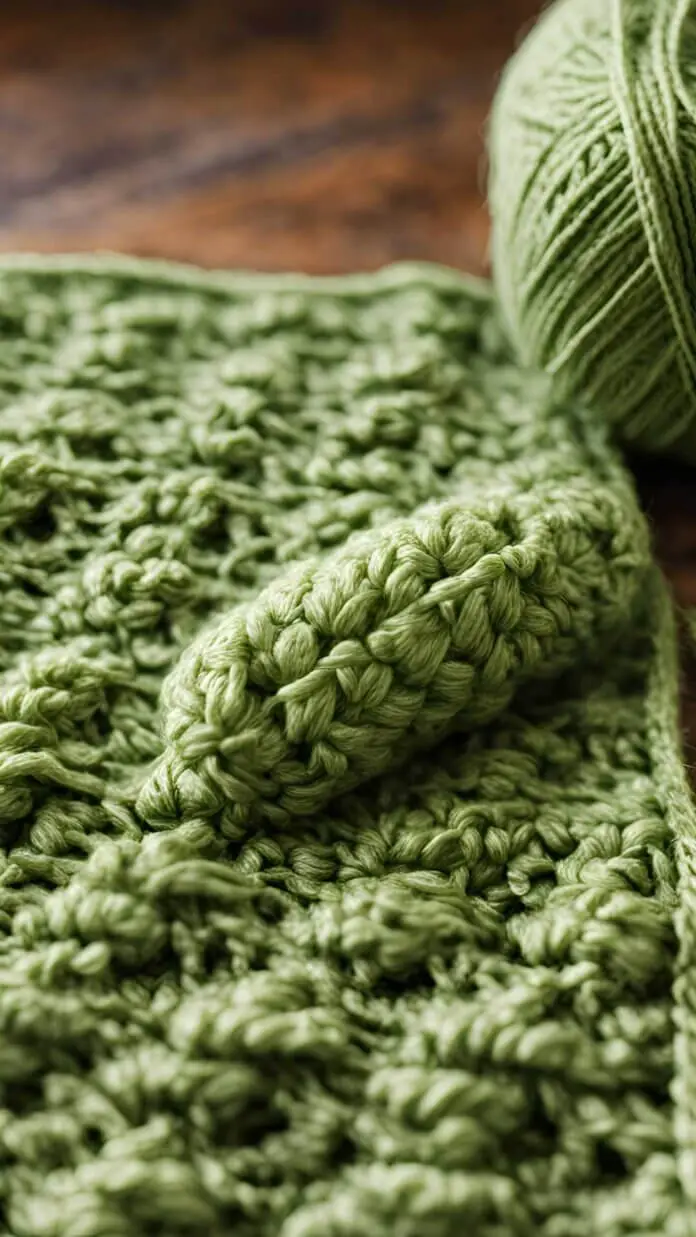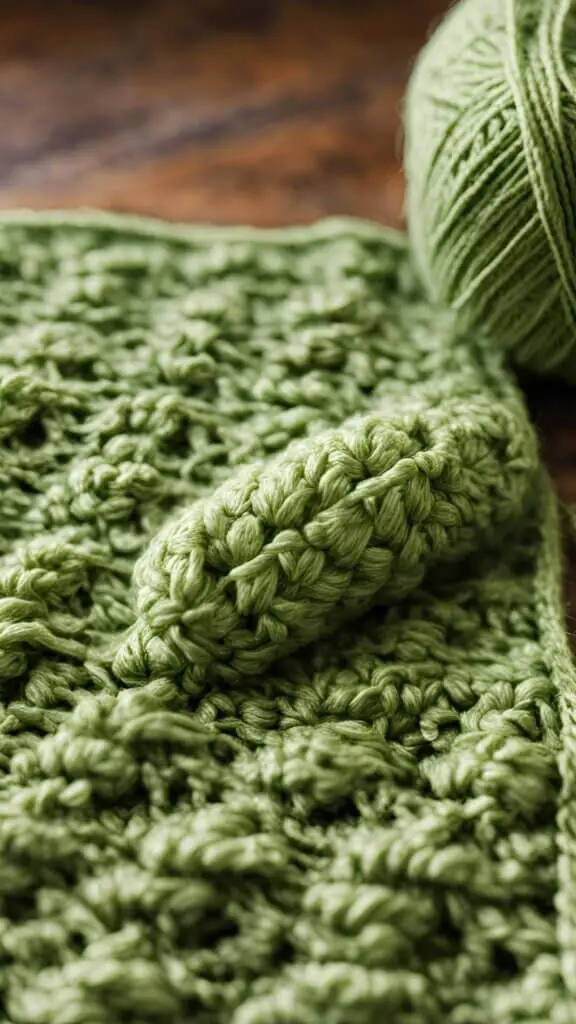Are you interested in adding a unique item to your crochet collection? This whimsical crochet pickle pattern is not only an enjoyable project but also a conversation starter, perfect for crochet enthusiasts.
You will learn everything necessary to crochet your own pickle, including essential materials, crochet techniques, and step-by-step instructions, making it easy even for beginners.
Additionally, creativity tips and guides will be provided to enhance your creation, along with information on where to find free patterns online through crochet forums and communities. Gather your colorful yarn and start crocheting.
What Is A Crochet Pickle Pattern?
A crochet pickle pattern is a creative DIY project that allows crafters to make an adorable stuffed pickle using crochet techniques. This distinct amigurumi design combines creativity with crochet supplies, making it a fun addition to any crochet enthusiast’s collection, perfect for both hobbyists and those who enjoy whimsical home decor.
Suitable for both beginners and experienced crocheters, a crochet pickle pattern usually features colorful yarn and a variety of crochet stitches, resulting in a charming and playful toy that can be kept or given as a handmade gift, perfect for adding a quirky touch to kitchen decor.
What Are The Materials Needed For A Crochet Pickle Pattern?
To create a crochet pickle, several essential materials are required, including a crochet hook, yarn, and various crochet supplies that enhance the crocheting process, such as a tapestry needle for finishing.
For this project, medium-weight yarn, such as cotton or acrylic, is recommended, as it offers the appropriate texture and durability. A 4.0 mm (G) crochet hook is typically suitable for achieving the desired tight stitches, which help the pickle maintain its shape, ensuring it becomes a delightful soft toy.
It is also important to have a yarn needle available for weaving in loose ends, and stitch markers can assist in tracking progress. Using basic stitches like single crochet, double crochet, and slip stitch will provide varied texture, while techniques like amigurumi can create the rounded, plump appearance that adds charm to the crochet pickle, making it a playful piece of food art.
How To Crochet A Pickle?
Crocheting a pickle can be an enjoyable and engaging activity for those who are interested in crafting. Following a detailed tutorial can simplify the process, particularly for beginners looking for free crochet patterns online, available on platforms like Pinterest and Etsy.
Step 1: Create A Slip Knot
The first step in crocheting a pickle is to create a slip knot, which is a fundamental technique serving as the foundation for many crochet projects. This simple yet essential knot secures the yarn to the crochet hook and establishes the correct tension for the entire piece, ensuring the perfect gauge.
To begin, take a length of yarn, allowing for a generous tail, and form a loop with the working yarn positioned behind the tail. By pulling the working yarn through the loop, a knot is created, which can then be gently tightened to fit snugly onto the hook. This slip knot is important because it provides flexibility, allowing crocheters to adjust their initial stitches as needed.
For those who are unfamiliar with this technique, numerous online tutorials offer step-by-step visual guides to help understand this essential skill.
Step 2: Make A Chain Stitch
After creating a slip knot, the next step is to make a chain stitch, which is essential for building the foundation of the crochet pickle pattern, contributing to its unique design and texture.
This stitch serves as the starting point for various crochet projects, establishing the groundwork for the subsequent rows or rounds. To begin, it is important to hold the yarn at a comfortable tension; too tight can make it difficult to insert the hook later, while too loose may lead to unevenness.
When selecting yarn, ensure that the right weight is chosen for the project, as this will influence both the outcome and the ease of working with the stitches. The chain stitch not only supports the entire structure but also affects the overall appearance, contributing to the texture and drape of the finished piece, making it a charming home decor item.
Step 3: Single Crochet
Following the chain stitch, the single crochet stitch is commonly used in many crochet patterns, offering a dense and sturdy fabric. This technique serves as the foundation for numerous projects, providing stability and structure, essential for maintaining the pickle’s playful design.
To perform a single crochet stitch, start by inserting the hook into the desired stitch, ensuring the yarn is not twisted. After wrapping the yarn around the hook, pull it through to create two loops on the hook. Then, yarn over again and draw through both loops to complete the stitch. This basic stitch is a staple in creating food-themed crafts and whimsical crochet art.
It’s important to maintain consistent tension; if the stitch is too tight, it may hinder the ability to work further stitches, while if it’s too loose, gaps may occur. As beginners practice, they may also try variations, such as half double or double crochet, to expand their skill set and create different textures, perfect for crafting techniques like pattern repeat and motif creation.
Step 4: Double Crochet
Incorporating double crochet stitches into the pickle pattern adds height and texture, allowing for more creative expression in the design. This technique enhances the aesthetic appeal and provides a sturdy framework for intricate patterns, making the pickle a standout piece in any crochet trends collection.
To execute a double crochet stitch, start by yarn-over and insert the hook into the stitch, yarn-over again, pull through, yarn-over once more, and finish by pulling through the last three loops on the hook. This straightforward method results in a lacy yet firm design that can effectively showcase various colors, perfect for seasonal crafts and playful food art.
Experimenting with different hues can highlight the playful nature of your pickle project; using a variegated yarn can create a unique gradient effect, or mixing contrasting colors in alternating rows can make a bold statement.
Step 5: Triple Crochet
Utilizing triple crochet stitches adds another layer of dimension to the piece, giving it a distinct appearance and texture, perfectly suited for artistic designs and intricate motifs.
This technique is particularly beneficial when crafting intricate motifs and artistic designs, as it allows for increased height and texture. By elongating the stitches, one can create visually striking patterns that stand out in any crochet project, making it a delightful addition to children’s toys and playful home decor.
Whether forming floral shapes or delicate lacework, the versatility of triple crochet supports creative exploration. When combined with various color schemes, it can convey a sense of movement and depth, transforming each item into a more artistic creation, perfect for fun projects and crochet art.
As a result, crocheters can personalize their projects, enhancing their appeal and individuality, making each piece a reflection of their unique creativity and style.
Step 6: Join The Ends
Once the main body of the crochet pickle is complete, joining the ends is essential for sealing the project and achieving a professional finish. There are several methods to accomplish this, each with its unique advantages. This step also emphasizes the importance of finishing techniques in crafting.
One popular technique is the slip stitch, which creates a nearly invisible seam, making it ideal for a polished look. Another effective option is the whip stitch, which is suitable for joining pieces securely. For those interested in adding a creative touch, a decorative join can provide flair while still being functional. It is important to maintain consistent tension during the join to enhance the overall aesthetic.
Perfecting finishing details, such as weaving in loose ends neatly, can significantly improve the appearance and durability of the crochet piece, ensuring it stands out in any collection, whether showcased in a market or shared on social media.
Step 7: Stuff The Pickle
Stuffing the pickle is a crucial step that transforms it from a flat crochet piece into a three-dimensional stuffed toy, adding both dimension and charm.
When selecting stuffing materials, there are various options available that can improve the eco-friendliness of the project. Sustainable materials such as organic cotton, recycled polyester, and natural wool can be excellent choices, providing both softness and environmental benefits.
It is important to ensure that the stuffing is evenly distributed, as this contributes to a polished appearance and enhances the durability and overall quality of the toy. Taking the time to fill the pickle uniformly will result in a creation that is visually appealing and safe for children to enjoy, fitting perfectly within food-themed crafts.
Step 8: Close The Ends
The final step in completing the crochet pickle involves closing the ends carefully, ensuring the stuffing remains secure while giving the toy its final shape, enhancing its overall charm and appeal as a handmade item.
This stage is important, as it directly affects the overall appearance and durability of the finished product. To effectively weave in loose ends, one can use a tapestry needle to thread the yarn through the stitches, pulling it tight to create a seamless look. It is essential to securely anchor the ends to prevent unraveling, which would compromise the integrity of the creation, ensuring it stands out among other handmade crafts.
A polished finish not only enhances visual appeal but also reflects the craftsmanship involved. By ensuring that every loose thread is accounted for, the artist can achieve a clean finish that elevates the crochet piece, making it an appealing addition to any collection.
Where Can You Find Free Crochet Pickle Patterns?
For individuals interested in creating a crochet pickle, there are many resources available online that provide free crochet patterns and instructions, simplifying the process of starting a new project. Blogs and video tutorials offer inspiration and guidance, perfect for crochet lovers and those looking to explore their hobby further.
1. Online Crochet Communities
Online crochet communities offer a variety of knowledge and resources, enabling crafters to share ideas, patterns, and tips for creating projects like a crochet pickle. These communities often host crochet classes and workshops, expanding skill levels and offering pattern customization ideas for crochet enthusiasts.
These communities serve as suitable spaces for individuals looking to enhance their skills and needlework while connecting with others who share similar interests. By joining these groups, members can gain access to exclusive patterns and free tutorials that may inspire their next DIY project.
Popular platforms such as Ravelry and Facebook groups encourage engagement through discussions and challenges. These interactions can lead to new friendships and provide support for troubleshooting any issues that arise. Participating in these crochet communities allows individuals to explore a wealth of creativity, crafting techniques, and collaboration.
2. Crochet Blogs
Crochet blogs often provide free crochet resources and patterns, making them valuable sources of inspiration for your next fun project.
One blog worth checking out is “All Free Crochet”, which offers a large collection of free patterns and helpful tips suitable for all skill levels. Another option is “Repeat Crafter Me”, recognized for its whimsical designs and easy-to-follow tutorials, often accompanied by step-by-step photos. If more in-depth discussions are of interest, “The Spruce Crafts” focuses on techniques and crochet fundamentals, making it ideal for skill development.
Exploring these blogs can reveal a wide range of fresh ideas, design tips, and techniques to enhance your crochet projects.
3. YouTube Tutorials
YouTube tutorials serve as a valuable resource for visual learners, providing step-by-step guidance on how to crochet a pickle from start to finish.
These video guides allow users to pause and replay sections, making complex techniques more manageable. This feature enables crafters to learn at their own pace, ensuring they understand each stitch before proceeding.
Many crafters find that the ability to rewatch challenging parts not only improves their skills but also increases their confidence. For those interested in crochet and amigurumi patterns, channels like ‘The Crochet Crowd’ and ‘Amigurumi Today’ are highly recommended, offering a variety of creative ideas and detailed instructions for various projects.
4. Craft Stores
Many local craft stores offer crochet supplies and printed pattern books, making them ideal locations to find everything needed for creating a crochet pickle.
Plus providing a wide selection of crochet essentials, these stores allow crafters to see and feel different yarn types, ensuring they select the right texture and weight for their projects. Shoppers can experience the vibrant colors and soft fibers in person, which can significantly influence their choices.
Many of these craft stores also host local events and crochet classes, offering opportunities to learn new techniques, meet fellow crocheters, and share inspiration. Such gatherings often foster creativity, making crafting a shared community experience rather than just a solitary activity.
Tips For Crocheting A Perfect Pickle
Crocheting a perfect pickle involves attention to detail and creativity. Following these creativity tips can improve the final product and make the process more enjoyable for anyone engaging in the crafting hobby.
1. Use The Right Yarn
Selecting the right yarn is important when crocheting a pickle, as it can affect the final appearance and feel of the project.
Different yarn types offer unique properties that can enhance the finished piece. For example, cotton yarn provides breathable and durable qualities that mimic the texture of real pickles, while softer acrylic yarn can create a whimsical, plush effect. When considering weight, lighter yarns can achieve a delicate look, whereas heavier options tend to create a more substantial feel.
Color palettes also play a significant role—greens that range from vibrant lime to muted sage can add depth and realism. For a creative twist, incorporating variegated yarns may introduce unexpected speckling, making the crochet pickle stand out.
Ultimately, choosing the best yarn can enhance the overall design, providing both visual appeal and tactile satisfaction. Consider embellishments to add charm and uniqueness to your handmade projects.
2. Pay Attention To Tension
Maintaining consistent tension throughout the crochet process is important for achieving a uniform look and feel in the finished product. This consistency not only improves visual appeal but also ensures the durability and functionality of the item.
Before starting any crocheting project, it is essential to gauge your tension. This involves working up a small swatch to assess how tightly or loosely the yarn is pulled. Taking this preliminary step can help identify any adjustments needed before committing significant time and resources.
If variations in tension are noticed while crocheting—perhaps due to fatigue or changing yarn characteristics—adjusting your grip may help. Regularly checking your work can assist in maintaining the desired uniformity.
3. Use Stitch Markers
Utilizing stitch markers can be very helpful for keeping track of stitches and maintaining the integrity of the crochet pickle pattern.
These tools are especially useful when working on intricate designs that involve multiple color changes or elaborate textures. By placing a stitch marker at the beginning of a round or after key stitches, crafters can easily identify where to increase or decrease, which helps ensure that the project retains its intended shape and size.
For instance, during complex granny squares, using a marker can assist in differentiating between rounds, reducing the confusion that often leads to unraveling hours of work. This technique also helps in tracking chain spaces and double crochet clusters, making the overall crochet process smoother and more enjoyable.
4. Practice Makes Perfect
As with any crafting hobby, practice is essential for mastering crocheting techniques and creating a perfect crochet pickle.
By regularly dedicating time to this enjoyable craft, individuals can develop their skills and build confidence in their abilities. Exploring different crochet ideas encourages creativity, leading to unique and personalized projects. Whether trying out new patterns or experimenting with various yarn types, the possibilities are vast. Crochet enthusiasts often find fun and playful projects that serve as delightful handmade gifts.
There are numerous resources available online, including video tutorials and informative blogs, where one can find inspiring patterns and useful tips. Joining crochet forums or social media groups can also provide a supportive community for sharing progress and receiving valuable feedback. Sites like Pinterest and Etsy can spark creativity with their vast collections of crochet art and handmade designs.
Frequently Asked Questions
What is a crochet pickle pattern?
A crochet pickle pattern is a set of instructions for creating a crocheted pickle using different stitches and techniques. It is typically available for free online and can be used by both beginners and experienced crocheters.
Where can I find free crochet pickle patterns?
You can find free crochet pickle patterns on various websites and blogs dedicated to crochet. Simply search for “crochet pickle pattern free” on a search engine and you will find many options to choose from.
Do I need any special materials to make a crochet pickle?
No, you do not need any special materials to make a crochet pickle. You will need a crochet hook, yarn, and a pair of scissors, which are all common tools used in crocheting.
Is a crochet pickle pattern suitable for beginners?
Yes, a crochet pickle pattern can be suitable for beginners as long as they have basic knowledge of crochet stitches and techniques. Some patterns may require more advanced skills, so it’s best to check the difficulty level before starting.
Can I customize a crochet pickle pattern?
Yes, you can customize a crochet pickle pattern by using different colors or adding embellishments like embroidery or beads. You can also adjust the size of the pickle by changing the hook size and yarn weight.
Are there any tips for making a crochet pickle?
Yes, here are some tips for making a crochet pickle:
– Use a stitch marker to keep track of your rounds.
– Pay attention to the tension of your stitches to ensure the pickle turns out the desired size.
– Experiment with different stitches and techniques to add texture and dimension to your pickle. Consider pattern customization for a quirky or fun look, perfect for home decor or as a soft toy for children.




